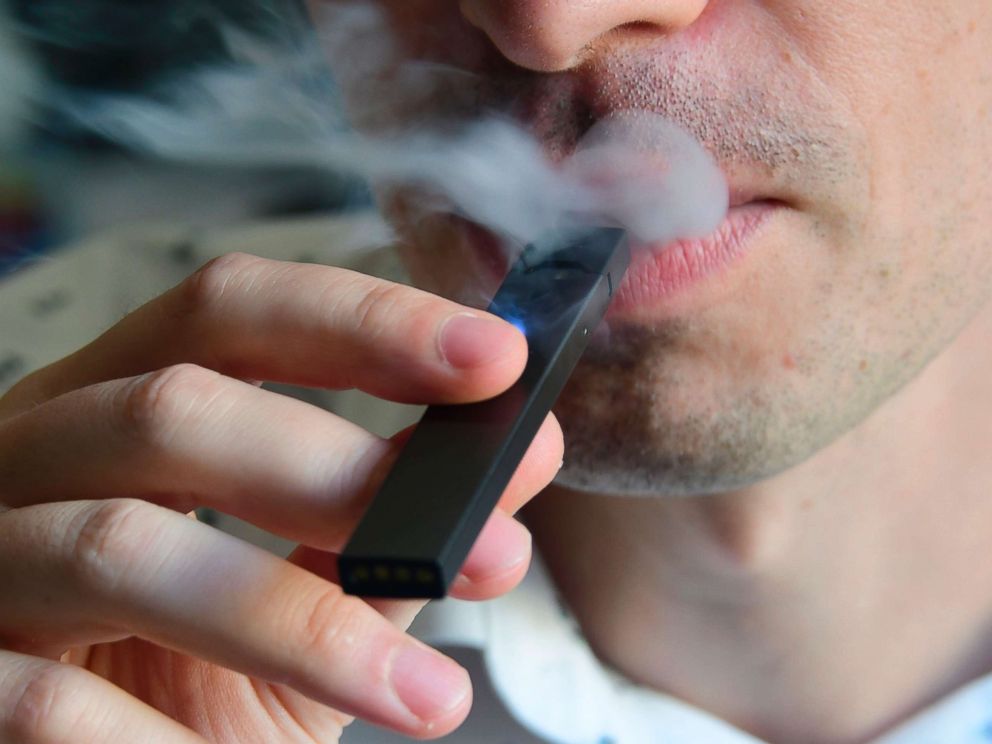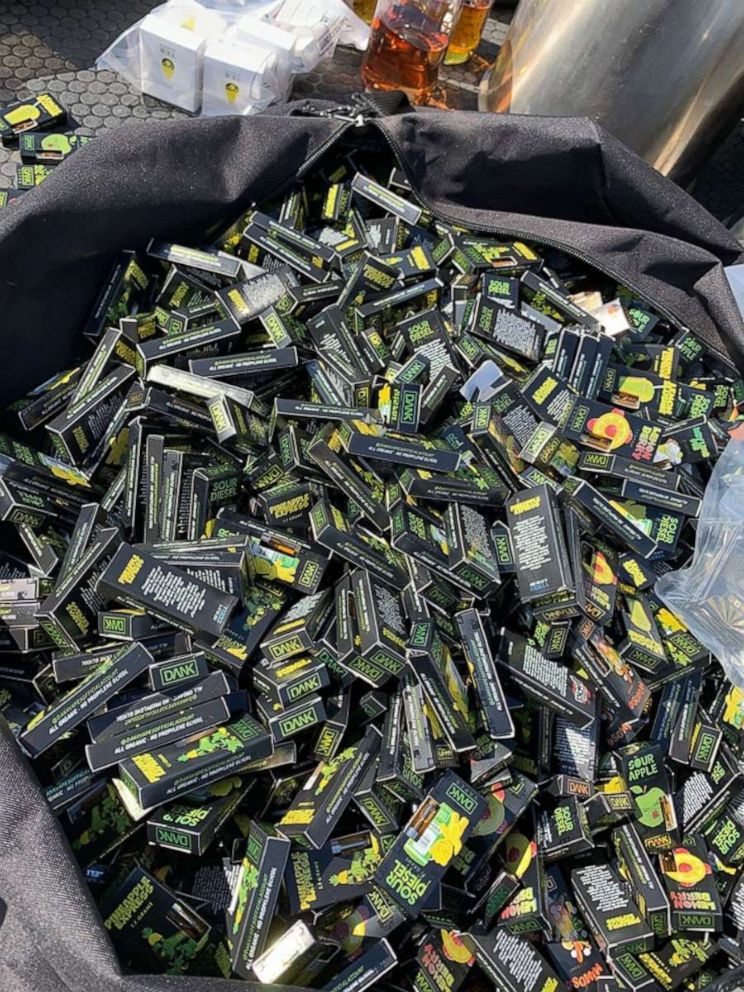3 things you might be getting wrong about the vaping epidemic, as lung injuries top 1,000 cases
We shouldn't conflate the teen vaping spike with the recent deaths and injuries.
Vaping-related injuries and deaths are continuing to mount, with the Centers for Disease Control and Prevention (CDC) reporting 1,080 lung injuries in 48 states and the Virgin Islands and 18 confirmed deaths from 15 states. A 19th death was reported in Connecticut.
The outbreak is "continuing at a brisk pace," Dr. Anne Schuchat, principal deputy director of the CDC said during a news briefing Thursday.
In addition to the updated injury and death count, researchers from the Mayo Clinic said in a report released Wednesday that some patients’ lung damage resembled chemical burns.
"This is a critical issue," Schuchat said.
States have responded to the reports with force. Massachusetts banned all vaping products for four months. New York, Michigan and Rhode Island, as well as Los Angeles county, rushed to ban flavored e-cigarettes. San Francisco banned e-cigarette salts. And California’s health department issued a “stop vaping” advisory to the public.
As the legislative frenzy unfolds, some experts said separate problems associated with e-cigarettes and vaping are being conflated. The emergence of the lung injuries and deaths, seemingly out of nowhere, has sparked fear and confusion about what products may be dangerous and why as well as how many people are at risk.
E-cigarettes and other vaping devices have exploded on the market since they first started gaining popularity in 2007. And the sheer number and variety of products in the retail market as well as the black market, including products containing THC, have made determining the cause of the disease outbreak that much more difficult.
Here is what to know:
Problem no. 1: E-cigarettes or E-Joints?
While public health officials haven't identified a single culprit in the more than 1,000 cases of vaping-related lung injuries, officials say many of the people who have become sick reported vaping THC.
Acting FDA commissioner Ned Sharpless said agency testing led the FDA to believe people were mixing pure THC with other oils to dilute the product, creating illegal and untested vaping liquids.
Seventy-eight percent of the more than 500 patients sampled reported using THC products, Schuchat said during Thursday's news briefing.
“A significant fraction of the THC products are contaminated with vitamin E acetate,” Sharpless said during a congressional hearing Sept. 25. The oil, generally used on skin, has “no business being in a pulmonary product,” Sharpless said. He believes vitamin E acetate was added as a cutting agent.

THC is the active ingredient in marijuana and because marijuana is still illegal under federal law, products containing THC can’t be regulated by agencies like the FDA. Federal officials say states that have legalized recreational or medicinal marijuana are responsible for regulating the safety of those products.
A crackdown on counterfeit or adulterated THC pods would require multiple federal agencies, including the Drug Enforcement Administration, working with states to identify the sources of contaminated pods and eliminate them, arrest people manufacturing or selling them illegally, or block imported vaping products or supplies coming into the U.S. from other countries, Sharpless and Schuchat said in the Sept. 25 hearing.
So instead of lumping all vaping products into the “e-cigarette” category, Dr. Michael Siegel, a professor at Boston University School of Public Health, refers to THC devices as “e-joints” or “vape pens.”
The distinction, he said, is important, given that a handful of states have already enacted emergency regulations banning e-cigarettes.
“Their whole rationale is that we have people dying from the outbreak,” Siegel said. “They’re declaring an emergency because of marijuana vaping products and the response is to ban e-cigarettes.
“It's a complete non sequitur.”
Problem no. 2: What is the 'vaping epidemic'?
Separate from the recent trend of vaping-related lung illnesses and deaths, public health officials have used the phrase “vaping epidemic” to describe the popularity of vaping devices like Juul. Juul’s incoming CEO said the company’s future is at risk due to unacceptable levels of youth usage and eroding public confidence in our industry."
"We appreciate the work of the CDC, FDA, and other public health authorities, and are confident that they will get to the bottom of this issue," a Juul spokesperson told ABC News.
Until a late September news conference, when CDC officials pointed to the risks of THC devices, the CDC “completely conflated the two issues,” Siegel said.
“I think a lot of damage was done by that,” he said.
"While this investigation is ongoing, CDC recommends that people consider refraining from using e-cigarette, or vaping, products, particularly those containing THC," said Brian King, a spokesperson for the CDC.
While officials and advocates are especially concerned about the growing popularity of these products among young people, because they have a high concentration of nicotine, which can have harmful effects on the developing brain, including addiction, those worries appear to be separate from the spate of acute lung injuries and deaths gripping the nation.

Prior to the newfound popularity of e-cigarettes, agencies reported declining rates of tobacco use among middle and high school students, but teen e-cigarette use has risen sharply since 2017, according to a government funded survey released last month.
Research has also found that teenagers who smoked e-cigarettes were more likely to experiment with traditional cigarettes than non-smokers were.
The concern about flavored e-cigarettes is tied to this trend because many young people report being introduced to the devices through flavored products, and experts and officials say they are concerned that companies are actively trying to appeal to younger customers through flavors that mask the taste of tobacco.
The rising rates of youth use have also increased the focus on how e-cigarette companies are advertising their products, including on social media where young people are likely to be exposed to advertising that portrays nicotine products in a positive light.
Problem no. 3: Are e-cigarettes safe?
Apart from the vaping outbreak and federal investigation, there’s a third issue: experts know very little about how safe -- or unsafe -- nicotine e-cigarettes are compared to traditional cigarettes.
To that end, the CDC has warned that "the aerosol that users inhale and exhale from e-cigarettes can potentially expose both themselves and bystanders to other harmful substances, including heavy metals, volatile organic compounds, and ultrafine particles that can be inhaled deeply into the lungs."
“I wish we could have these dramatic, awesome data sets showing us the answer,” said Dr. Laura Crotty Alexander, an associate professor of medicine at the University of California, San Diego, who researches the long-term effects of e-cigarette use on health.
While much of Crotty Alexander’s research is on animals, which can’t necessarily be extrapolated to apply to human health, Crotty Alexander said that based on her research, she believes daily vaping is going to cause disease over time.
However, while non-smokers shouldn’t pick up the habit, she said, “it’s hard to believe that e-cigarettes would be equally harmful or worse than conventional tobacco, because conventional tobacco is so bad."
The CDC advises that while e-cigarettes have the "potential to benefit adult smokers who are not pregnant if used as a complete substitute for regular cigarettes and other smoked tobacco products," scientists "still have a lot to learn about whether e-cigarettes are effective for quitting smoking."
So while blanket bans may help deter teen smoking, they could potentially harm adult smokers trying to quit.
But forgoing a complete ban has greater risks, according to Crotty Alexander.
“We are setting up this whole new generation of non-smokers to become addicted to nicotine,” she said.




